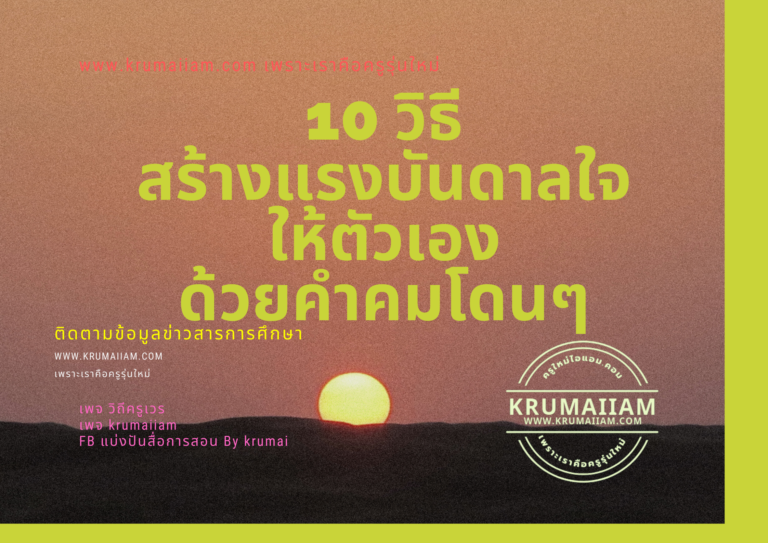สรุป Grammar ภาษาอังกฤษ ตอน Nouns, Article And Pronouns.
การใช้ Nouns, Articles, และ Pronouns เป็นส่วนสำคัญในภาษาอังกฤษ โดยมีหลักการใช้แตกต่างกันดังนี้:
### Nouns (นาม)
Nouns (คำนาม): คำที่ใช้เรียกแบบเฉพาะเจาะจงทั้งการใช้เรียก ชื่อคน ชื่อสถานที่ ชื่อสัตว์ และชื่อของสิ่งของ ที่เราพบเห็นในชีวิตประจำวัน เช่น คำที่ใช้เรียกชื่อของคน สัตว์ กิจกรรม เหตุการณ์ และสถานที่ เช่น คำที่ใช้เรียกชื่อของคน: สุนัข (dog), โรงเรียน (school), งานแต่งงาน (wedding) และอื่น ๆ
**การใช้ Nouns**: Nouns ใช้เพื่อแทนสิ่งต่าง ๆ ในโลกหรือเพื่อบ่งบอกถึงสิ่งต่าง ๆ ซึ่งสามารถแบ่งออกได้เป็นสองประเภทหลักคือ Proper Nouns (นามเฉพาะ) และ Common Nouns (นามสามัญ)
**ตัวอย่าง**:
– Proper Nouns:(นามเฉพาะ)John, London, Coca-Cola
– Common Nouns:(นามทั่วไป) car, city, soda
### Articles (คำนำหน้านาม)
**การใช้ Articles**: Articles มีทั้งหมดสามประเภท ได้แก่ a, an, และ the ซึ่งใช้ในการระบุความเฉพาะและการไม่เฉพาะของ Nouns
– **a** หรือ **an**: ใช้ในกรณีที่ต้องการระบุ Noun ที่ไม่ได้เป็นสิ่งที่มีเพียงเดียว และต้องการระบุไว้เพื่อเป็นบทนำ
**ตัวอย่าง**:
– a car (รถยนต์ใดๆ)
– an apple (แอปเปิ้ลใดๆ)
– **the**: ใช้เพื่อระบุ Noun ที่เป็นสิ่งที่แน่นอน หรือได้รับการระบุไว้แล้ว
**ตัวอย่าง**:
– the car (รถยนต์ที่ระบุไว้)
– the apple (แอปเปิ้ลที่ระบุไว้)
### Pronouns (สรรพนาม)
**การใช้ Pronouns**: Pronouns ใช้แทน Nouns เพื่อลดความซ้ำซ้อนในประโยค และช่วยให้ประโยคมีความกระชับมากขึ้น
**ตัวอย่าง**:
– I, you, he, she, it, we, they (Personal Pronouns)
– my, your, his, her, its, our, their (Possessive Pronouns)
– myself, yourself, himself, herself, itself, ourselves, themselves (Reflexive Pronouns)
ขออธิบายเกี่ยวกับ Pronouns ให้เข้าใจง่าย ๆ กันค่ะ:
- Personal Pronoun (สรรพนามแทนบุคคล):
- ใช้แทนคน สัตว์ หรือสิ่งของที่เราพูดถึง
- ประกอบด้วย:
- บุรุษสรรพนามที่ 1 (ตัวผู้พูด): “I” (ผม/ฉัน) และ “we” (เรา)
- บุรุษสรรพนามที่ 2: “you” (คุณ)
- บุรุษสรรพนามที่ 3: “he” (เขา – ผู้ชาย), “she” (เธอ – ผู้หญิง), “it” (มัน – สิ่งของ, ทารก, สัตว์), และ “they” (พวกเขา)
- Possessive Pronoun (สรรพนามเจ้าของ):
- ใช้แทนคำนามเพื่อแสดงความเป็นเจ้าของ
- ตัวอย่าง:
- “This is my book.” (นี่คือหนังสือของฉัน)
- “The car is hers.” (รถคือของเธอ)
- Reflexive Pronouns (สรรพนามตนเอง):
- ใช้เมื่อกรรมของกริยาเป็นตัวเอง
- ตัวอย่าง:
- “She hurt herself.” (เธอทำร้ายตัวเอง)
- Definite Pronoun (หรือ Demonstrative Pronouns, สรรพนามเจาะจง):
- ใช้เพื่อชี้เฉพาะคำนามในประโยค
- ตัวอย่าง:
- “Take this pen.” (เอาปากกานี้)
- Indefinite Pronoun (สรรพนามไม่เจาะจง):
- ใช้แทนคำนามที่ไม่ระบุชัดเจน
- ตัวอย่าง:
- “Everyone did their best.” (ทุกคนทำดีที่สุด)
- Interrogative Pronoun (สรรพนามคำถาม):
- ใช้ในคำถาม
- ตัวอย่าง:
- “Who is he?” (เขาคือใคร?)
- Relative Pronoun (สรรพนามเชื่อมความ):
- ใช้เชื่อมประโยคหรือวลี
- ตัวอย่าง:
- “The book that I read was interesting.” (หนังสือที่ฉันอ่านน่าสนใจ)
### การออกข้อสอบ
ต่อไปนี้คือข้อสอบ 10 ข้อที่เกี่ยวกับ Nouns, Articles, และ Pronouns:
1. Choose the correct article for the blank: “______ apple a day keeps the doctor away.”
– a) An
– b) The
– c) A
2. Identify the type of noun in the sentence: “The Taj Mahal is a beautiful monument.”
– a) Proper noun
– b) Common noun
3. Replace the underlined noun with a pronoun: “John bought a new car.”
– a) it
– b) them
– c) his
4. Choose the correct possessive pronoun: “Is this book ____?”
– a) his
– b) he’s
– c) him
5. Fill in the blank with the appropriate article: “She is ___ artist.”
– a) an
– b) a
– c) the
6. Identify the personal pronoun: “They went to the store.”
– a) they
– b) went
– c) store
7. Choose the correct reflexive pronoun: “She cooked dinner _____.”
– a) herself
– b) her
– c) she
8. Select the proper noun in the sentence: “The Eiffel Tower is in Paris.”
– a) Tower
– b) Eiffel
– c) Paris
9. Replace the underlined noun with a pronoun: “The cat chased the mouse.”
– a) it
– b) them
– c) its
10. Fill in the blank with the appropriate article: “He has ___ interesting idea.”
– a) an
– b) a
– c) the
### เฉลยและอธิบายเฉลย
1. c) A – ใช้ a เนื่องจากคำว่า apple เป็น common noun ที่ไม่ได้ระบุเป็นเฉพาะ
2. a) Proper noun – ใช้ในการกำหนดถึง Taj Mahal ซึ่งเป็นชื่อสมมติ
3. a) it – ใช้ it เป็น pronoun แทน car ในประโยค
4. a) his – ใช้เพื่อกำหนดให้เป็น possessive pronoun ของ book
5. a) an – ใช้ an เนื่องจากต้องการระบุ artist ที่เป็น common noun โดยไม่ได้ระบุไว้ก่อน
6. a) they – ใช้เพื่อระบุบุคคลหรือสิ่งของที่ไปที่ store
7. a) herself – ใช้ herself เนื่องจากต้องการระบุการกระทำของเธอเอง
8. b) Eiffel – ใช้ Eiffel เป็นชื่อสมมติของอาคาร
9. a) it – ใช้ it เป็น pronoun แทน cat ในประโยค
10. b) an – ใช้ an เนื่องจากต้องการระบุ idea ที่เป็น common noun โดยไม่ได้ระบุไว้ก่อน
การใช้ Nouns, Articles, และ Pronouns เป็นสิ่งสำคัญที่ในการเขียนและพูดภาษาอังกฤษอย่างถูกต้องและชัดเจน การฝึกฝนและเข้าใจหลักการใช้งานเหล่านี้จะทำให้ทักษะการใช้ภาษาดียิ่งขึ้นได้เป็นอย่างมาก
บทความ chatGPT / ภาพ Bing










